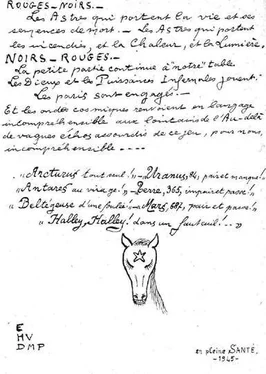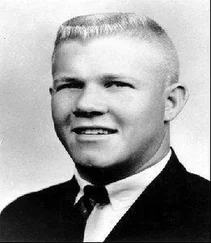Estimates for the number of summary executions with no attempt to use the legal system have dropped significantly. In the immediate aftermath of the Liberation, historians believed that there were anywhere from 30,000 to 100,000 slayings. More recent studies have estimated the total figure at perhaps 8,000 to 9,000. At any rate, the euphoria of liberation was giving way to the bitter controversies of retribution. Veteran intelligence agent Roger Wybot compared the atmosphere surrounding the search for collabos that autumn to the “stock market in a moment of madness.”
Some Frenchmen believed that the exuberance in purging suspected collaborators was undermining the shaky foundations of the country’s unity. François Mauriac was one of many people who urged caution, appealing for reconciliation, not revenge, as France’s new leaders confronted the challenges of rebuilding the country. Others, like Albert Camus at Combat , pressed to take the purges further, punishing the criminals for cruelties they committed—the author of The Stranger had not yet reached his famous opposition to the death penalty. Captain Henri Valeri, working on the Petiot case, agreed with Camus, pushing his men at the Reuilly armory to show no mercy tracking down collaborators and rooting them out of power. France, he said, was using eyebrow tweezers, when the proper instrument should be a shovel.
ON the morning of October 31, 1944, a man in khaki uniform with a kepi, an FFI armband, dark glasses, and a thick beard stepped onto the platform of the Saint-Mandé-Tourelle railway station. At 10:45, as he punched his ticket, a stranger walked up to him and asked the time. Then, with this distraction, the stranger kicked him in the groin and three other men jumped on him. The man in khaki was carried out of the railway station, blindfolded, and gagged, with his hands cuffed and feet bound. After seven months and twenty days eluding arrest, Marcel Petiot had been captured.
Escorted back to the Reuilly armory, Petiot was forced to remove his FFI armband and uniform, so that he would “no longer sully the honor of the French army.” The murder suspect carried a loaded 6.35 revolver, 31,780 francs in cash, and a large number of false identity papers and blank documents for search warrants, orders, and arrests. A Communist Party card, identification number no. 268004, only eight days old, was found in his possession, along with a membership card (No. 29 097) for the Communist organization of the France-U.S.S.R. Friendship Committee. Petiot also had a number of ration cards under various names, including one for a little boy named René, whose last name had been smudged and replaced. At this time it was not known who the child was, though police would soon have a good idea.
Given the amount of coverage that the murders initially received, it might seem that with his arrest Marcel Petiot would again dominate the news. This was not the case. Although reports would regularly appear both in French and international media, many of the former underground newspapers did not care for the topic. It was embarrassing, to say the least, to have this man claim the cause of the Resistance, as he would do with fervor, and his story would certainly raise many unwelcome questions. The Petiot case, moreover, had been sensationalized so much in the captive press, to distract from the harsh realities of the Occupation, that it alienated editors who once worked on Resistance papers.
Albert Camus’s paper, Combat , exemplified the trend when its editors reported Petiot’s arrest and then proclaimed their reluctance to cover the monstrous tale: “We believe we have fulfilled our journalistic obligations by relaying this news without commentary. We will do the same each day, but we refuse to glorify an affair which is repugnant from so many points of view.” This reaction—if understandable in the charged circumstances of the autumn of 1944—was unfortunate. Without a full investigation, many questions about the case would remain no closer to resolution.
The man who actually arrested Petiot, Captain Simonin, was himself a recent recruit to the Resistance—one of approximately ten thousand agents who then belonged to the emerging intelligence service answering to the War Ministry and known as the DGER (Direction Générale des Etudes et Recherches). Actually, Simonin was not his real name, and he was not authorized by French police to make the arrest. He was later identified as a thirty-one-year-old former police officer named Henri Soutif, who had served as the commissaire des renseignements généraux of Quimper in northern France, collaborated closely with the Occupation authorities, and ordered the arrest, torture, and deportation of many Frenchmen.
Simonin’s arrest had come at a propitious time. Among the papers in Petiot’s possession was an order for the suspect, under one of his several aliases, to transfer to DGER offices in Saigon. Was Petiot hoping to escape to French Indochina, where he would serve in the Medical Corps of the intelligence service? This was at least one of his options. Petiot’s date of departure was apparently set for November 2, 1944.
In perhaps the biggest surprise, Captain Henri Valeri and Marcel Petiot turned out to be the same person. In typically bold style, Petiot had posed as Valeri and maneuvered into a position inside Reuilly to help authorities find the killer of rue Le Sueur. At one point during his investigation, he even gained a meeting to discuss the case with the procureur de la république , who later said he had been impressed by Valeri’s thoroughness, energy, and command of the facts of the case.
“It’s unbelievable,” Valeri’s secretary, Cécile Dylma, said to Inspectors Lucien Pinault and Émile Casanova, about learning the identity of her boss. “He’s a man so sweet, so calm. Captain Valeri has never shown a single act of anger towards us.” At the same time, she acknowledged that he declined most invitations and generally kept quiet about his private life. “To think that I have been alone with him in his office for a month,” Dylma said, “it makes me shudder.”
Commissaire Massu would not have the satisfaction of arresting Petiot. In the purges that followed the end of the Occupation, which soon escalated to involve the removal of twelve hundred officers from the police department, Massu had been arrested on August 20, 1944. He was accused of four specific charges of collaboration with the enemy, which included furnishing information to the Occupation authorities that led to the execution of patriots, working cordially and “dining on several occasions” with the German liaison to the Police Judiciaire, and deporting a Jewish woman and two girls who had been arrested for a misdemeanor. His enemies pounced. The commissaire was taken away to Fresnes.
One of the documents that Petiot carried at the time of his arrest was an elaborate accusation against Commissaire Massu. The former head of the Brigade Criminelle, Petiot-Valeri wrote, should be suspended not just from his duties at the quai des Orfèvres, but more important, in the name of justice, from “the end of a rope.” Petiot’s job of punishing “collaborators” had put him in a frightening position to destroy anyone who could expose his past. How far could Petiot have gone in wiping the slate clean if he had not succumbed to his vanity and written an editorial to the Parisian newspaper? And, one wonders, how far did he go?
In December 1944, the disgraced and depressed former commissaire, recipient of the Légion d’honneur, slit his wrists in an obvious suicide attempt. Rushed to Hôtel-Dieu, Massu recovered and eventually returned to face an official collaboration tribunal, which on April 20, 1945, cleared him of all charges, for lack of evidence. There was not a single “anti-national act with which one could reproach Massu,” Arthur Airaud, president of the Commission d’épuration at the Préfecture de Police, declared. That same day, Massu was freed from Fresnes, just over one year and three months after Marcel Petiot had walked out of the same building.
Читать дальше












